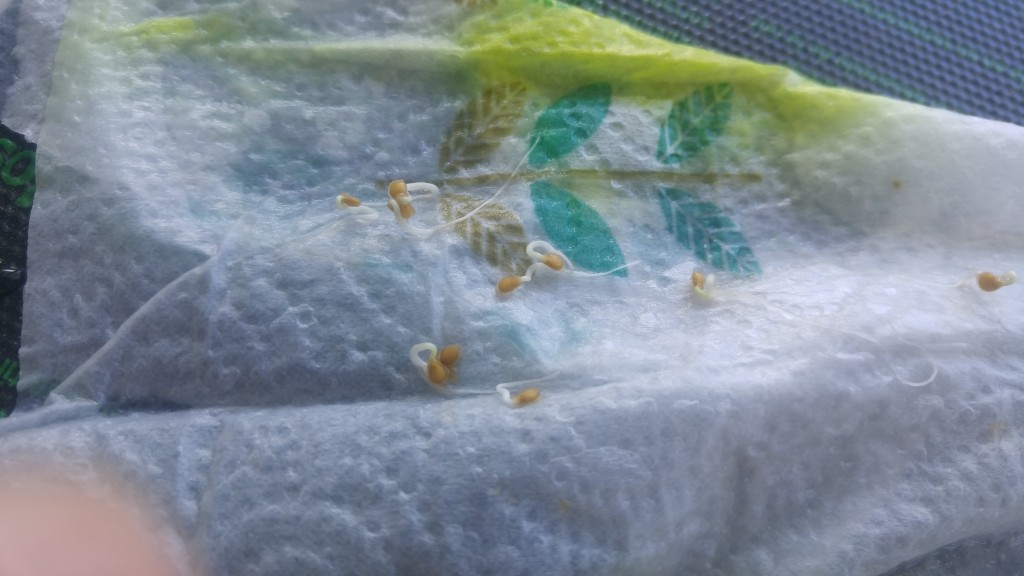After taking inventory of our seeds last week, we had to decide which seeds we were going to keep and which we needed to throw out. Each year we write the date on the seed containers, that gives us a starting point.
Some seed packs slipped through our system though and had no date on them, just the variety name. Others were getting to be a few years old meaning they were approaching the out side limits of their shelf life. As seeds get older, their ability to germinate begins to decline. In many cases they still can be used even though they are past their prime. This week we are running germination tests on several types of seeds to see if they are something we would be able to use in the garden.
A simple germination test is easy to do and gives you a pretty good idea if it’s worth keeping a pack of seeds. To do the test, pick ten seeds at random of one type of plant that we want to test, for example ten tomato seeds or ten onion seeds. Next take a moistened piece of paper towel. Place the seeds on the paper towel on half of the sheet and fold the sheet over to cover the seeds. The seeds and moist paper towel go in a zip-loc bag and are sealed up. Then put the bag in a warm place to help speed up germination, we use our plant warming mat.
Check the seeds every day to see if any are sprouting. If you have the original packet, it usually tells how long it takes for germination. But when you use a warming mat with moist conditions inside the plastic bag, seeds usually sprout much quicker.
The number of sprouted seeds gives you the germination percentage. For example, if eight of the ten seeds sprout, you have an 80% germination rate.
The big surprise for us was an unmarked envelop of ‘Chadwick Cherry’ tomato seeds we found with the rest of our seeds. I don’t know where that envelop came from , maybe someone gave us some seeds a few years ago. We were expecting an low germination percentage but nine out of ten germinated. That was an excellent outcome and we’ll be growing those in the garden this season. On the other hand, a group of onions we were looking at only had one seed sprout, we’ll toss those into the compost. Too bad because it was a pretty big packet of seeds.
Even if your seeds have a low germination percentage you can still use them, just plant extra seeds to make up the difference. For example if only half of your seeds germinate, plant double the amount.
It’s true that you can buy fresh seeds of common varieties very cheaply. However, in our case we save quite a few heirloom and open-pollinated seeds that are not available anywhere else.Plus we don’t like to waste anything if it is still usable.
Bob
